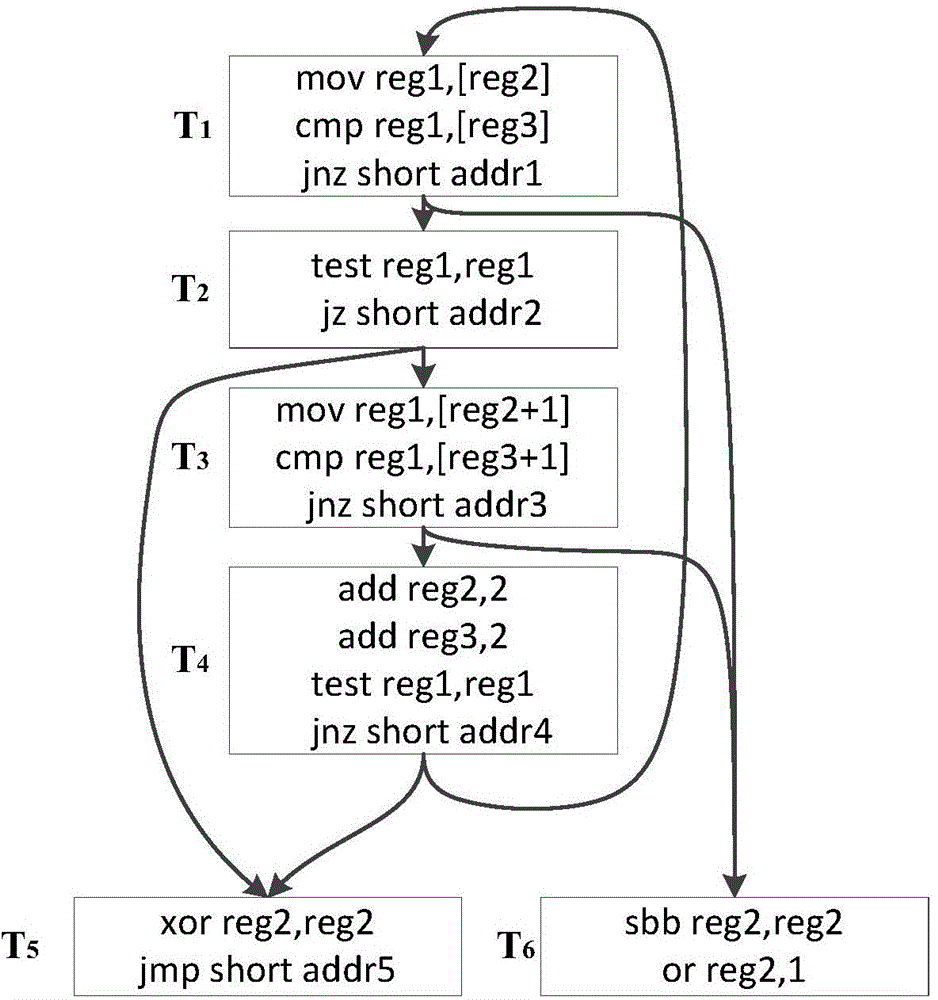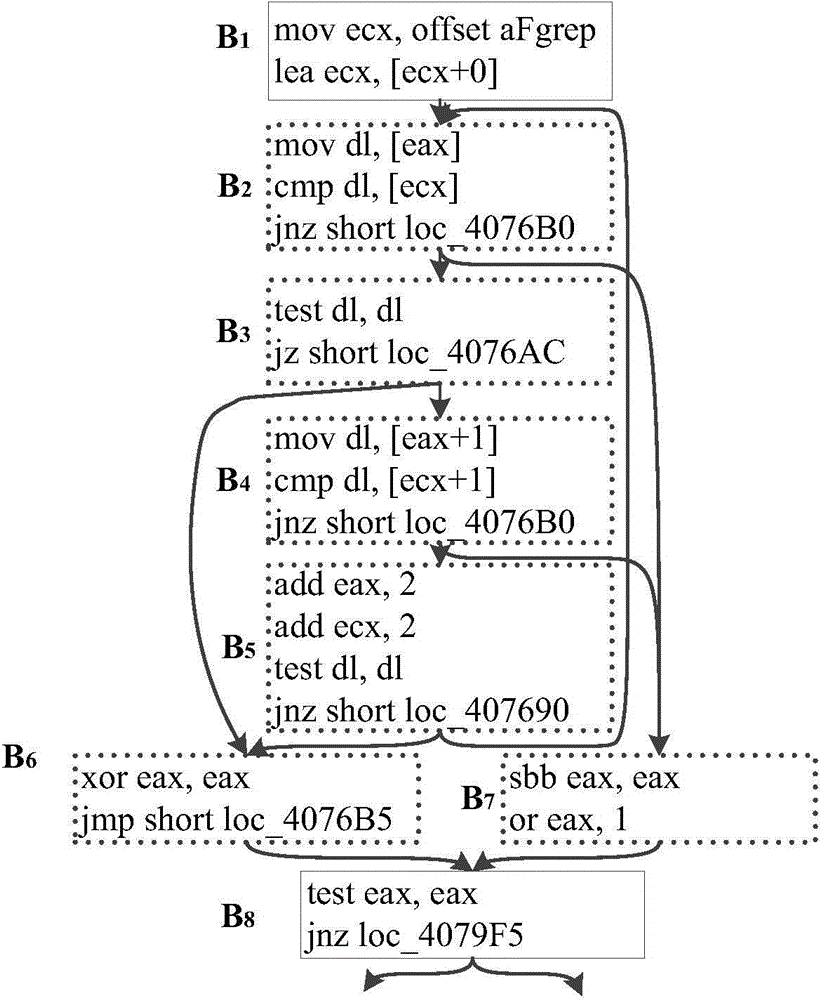Intrinsic function recognition method based on sub-graph isomorphism matching algorithm in decompilation
A subgraph isomorphism and matching algorithm technology, applied in the field of decompilation, can solve problems such as ineffective representation of the control flow relationship of instruction statements, incomplete decompilation results of intrinsic functions, and impact on the readability of high-level codes, etc., to achieve strong functionality. Extensibility, enhanced readability and accuracy, and the effect of increasing the level of abstraction
- Summary
- Abstract
- Description
- Claims
- Application Information
AI Technical Summary
Problems solved by technology
Method used
Image
Examples
Embodiment Construction
[0033] The present invention will be described in further detail below in conjunction with the accompanying drawings.
[0034] The intrinsic function identification method based on the subgraph isomorphism matching algorithm in the decompilation provided by the present invention comprises the following steps:
[0035] First, for a specific compiler, build the compiler’s intrinsic function template library: select a program with intrinsic function calls as a sample program, compile the sample program under the compiler optimization option to generate an executable file; use the IDA disassembler to disassemble Assemble the executable file, and use the generated assembly file as the input of the Boomerang decompiler. The Boomerang decompiler loads and decodes the assembly file. The decoding module uses continuous assembly instructions as basic blocks, and the control flow relationship as directed edges. Construct the assembly instruction control flow graph of the assembly file; e...
PUM
 Login to View More
Login to View More Abstract
Description
Claims
Application Information
 Login to View More
Login to View More - R&D
- Intellectual Property
- Life Sciences
- Materials
- Tech Scout
- Unparalleled Data Quality
- Higher Quality Content
- 60% Fewer Hallucinations
Browse by: Latest US Patents, China's latest patents, Technical Efficacy Thesaurus, Application Domain, Technology Topic, Popular Technical Reports.
© 2025 PatSnap. All rights reserved.Legal|Privacy policy|Modern Slavery Act Transparency Statement|Sitemap|About US| Contact US: help@patsnap.com



